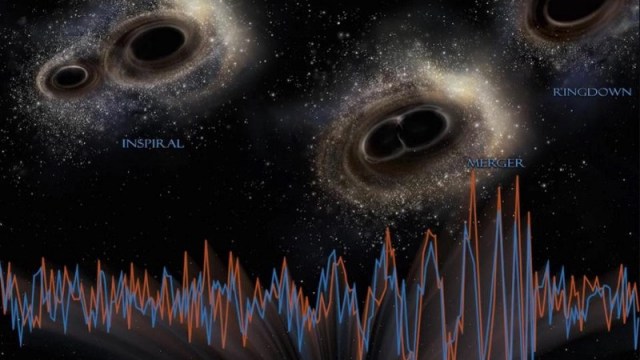Ask Ethan: Can the Universe ever expand faster than the speed of light?
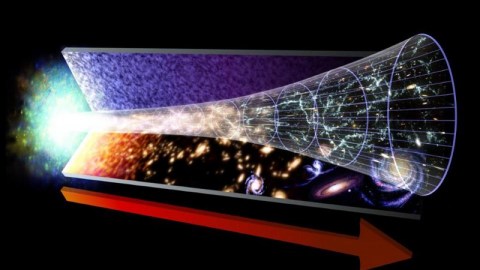
How the Universe’s expansion rate continues to baffle us.
“In expanding the field of knowledge we but increase the horizon of ignorance.” –Henry Miller
It’s the most fundamental law of special relativity, and the realization that led Einstein to some of the greatest physics breakthroughs of all time: the idea that nothing can travel faster than light. That holds true even today, as all massless particles in a vacuum move exactly at the speed of light, while anything else — a massive particle anywhere or a massless one in a medium — are doomed to move slower than the speed of light. But when it comes to the expanding Universe, this seems like it might not still hold. Kevin Forward wants to know, as he asks:
In the first millionths of a second of the Big Bang did the universe not expand faster than the speed of light?
As a spoiler: no, it didn’t expand faster than light then, nor at any other time, nor will it ever do so. But there’s a good reason why one might think it once did.

Our Universe, as we see it today, has been around for 13.8 billion years since the hot Big Bang. But if you’re asking how far we can see in any direction, the answer isn’t 13.8 billion light years; it’s much farther than that. You might, if you think very hard, imagine that twice that distance is possible: if a light-emitting object were 13.8 billion light years away 13.8 billion years ago, perhaps it emitted light while it was speeding away from us, maybe even at a speed approaching the speed of light. If a bright object existed back then and was constantly moving away from us at 299,792 km/s, its light would be just arriving now, while the object itself would be 27.6 billion light years distant. All of that is solid reasoning, but it makes an assumption that isn’t necessarily good: that space itself is static.
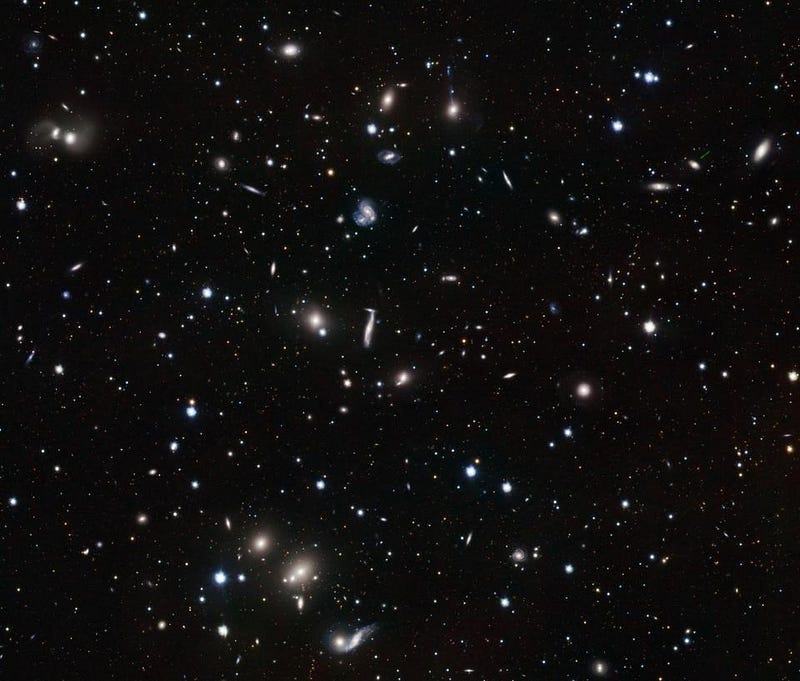
The space we inhabit isn’t static; it’s expanding. In fact, we can measure what the expansion rate is today, what it was like in the distant past, and at every epoch in between. As it turns out, an object that was merely 168 meters away at the Big Bang (okay, at 10–33 seconds after the Big Bang) would only have its light reach us today, 13.8 billion years later, after an incredible journey, and an incredible amount of stretching, and would presently be 46.1 billion light years away.
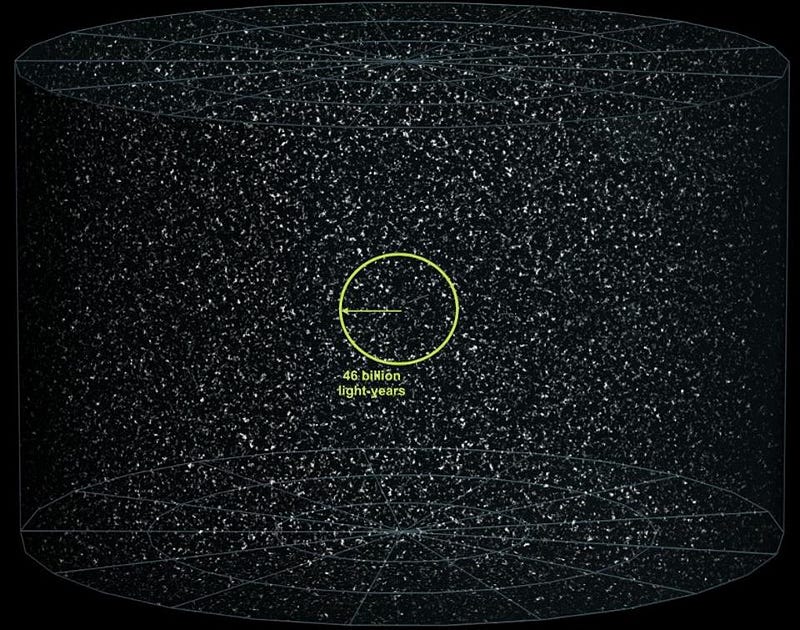
“A-ha,” you proclaim, “that means space expanded faster than light!”
Did it though? Because for something to go faster-than-light, it needs to have a speed inherent to it: something you can measure in, for example, kilometers per second. But that’s not how the Universe expands at all.
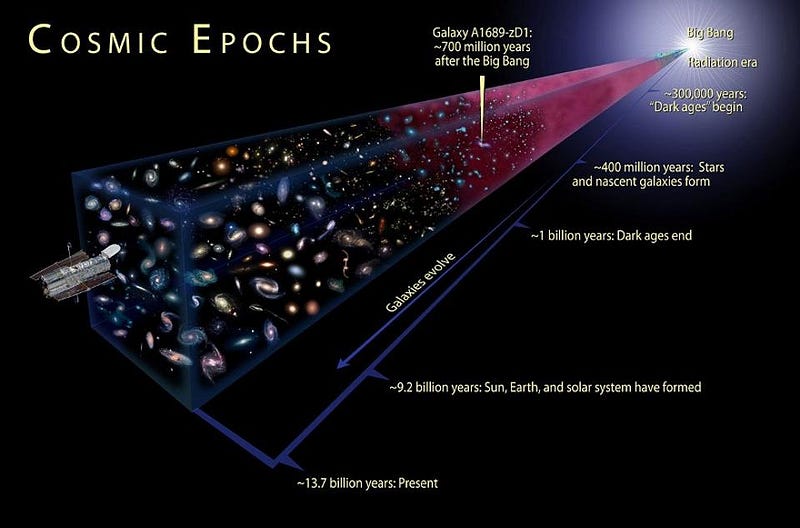
Instead, the Universe expands as a speed per unit distance: we normally measure it in kilometers per second per megaparsec, where one megaparsec is about 3.26 million light years. If the expansion rate is 70 km/s/Mpc, that means, on average, an object that’s 10 Mpc away should expand away at 700 km/s; one that’s 200 Mpc away should recede at 14,000 km/s; and one that’s 5,000 Mpc away should appear to be moving away at 350,000 km/s.
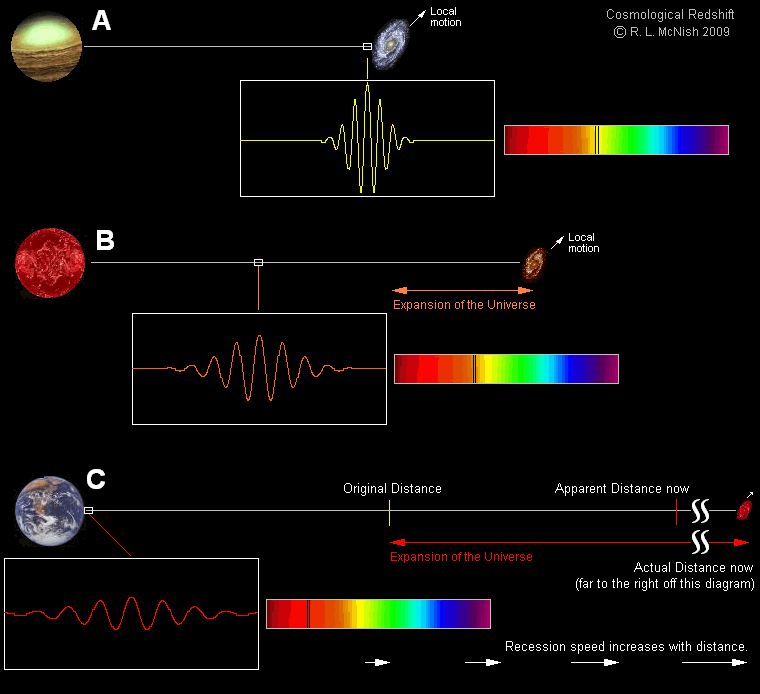
Does that mean anything is moving faster than light, though? Let’s go all the way back to Einstein’s special theory of relativity, and ask what it means when we say that nothing can move faster than light. It means that, if you have two objects at the same spacetime event — occupying the same space at the same time — then they can’t move relative to one another at a speed faster than the speed of light. Even if one is moving north at 99% the speed of light and the other moves south at 99% the speed of light, they won’t be moving at 198% the speed of light relative to each other, but 99.995% the speed of light. No matter how fast each one moves, they will never exceed the speed of light relative to one another.
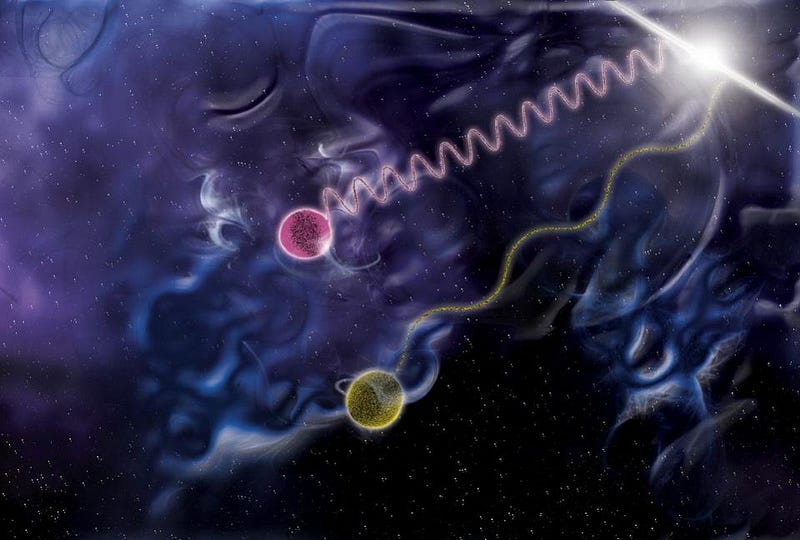
That’s why it’s called relativity in the first place, because it measures relative motion between two objects at the same location in space and time. But that type of relativity — special relativity — only sets the rules in your local, non-expanding space. General relativity adds another layer on top of that: the fact that space itself expands. By measuring the amount of normal matter, dark matter, dark energy, neutrinos, radiation and more present in the Universe today, and how light reaching us from all different distances in the Universe redshifts with that expansion, we can reconstruct exactly how big the Universe was at any point in the past.
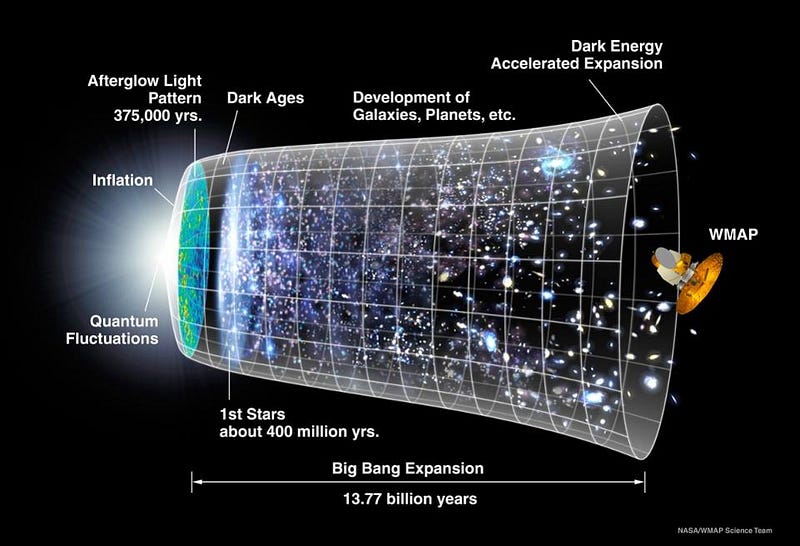
When it was approximately 10,000 years old, the observable Universe was already 10 million light years in size. When it was just one year old, the observable Universe was nearly 100,000 light years in size. When it was one second old, it was already more than 10 light years in size. That sure does sound like expanding faster than light, doesn’t it? But at no point did any particle move faster than light relative to any other particle that it interacted with.
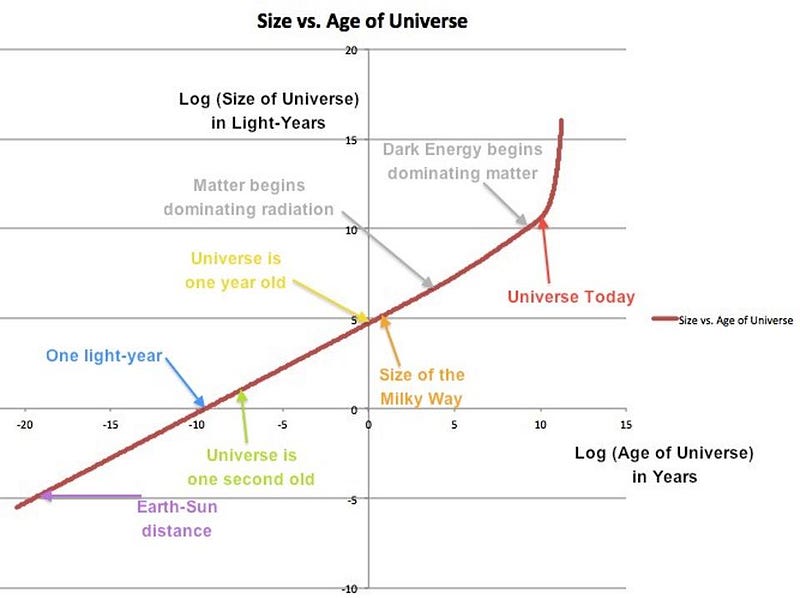
Instead, all that happened was that the space between particles expanded, and as it did, it increased the distance between them and stretched the wavelength of radiation present within that space. This has continued for the billions of years of cosmic history that took place since, and continues to take place today. While we may never reach any objects farther away than 15.6 billion light years today, even if we went at the speed of light, that’s not because they’re receding faster than light, but because the space between different locations continues to expand.
The key takeaway is that space doesn’t expand at a particular speed, but rather at a particular rate: a speed-per-unit-distance. As a result, the farther away you look, the more the expansion of space affects the distance between you and that object you’re viewing. As long as it’s expanding, you can calculate a distance that, if you exceed it, everything appears to be receding away from you faster than 299,792 m/s. The farther away an object is, you can be sure that its light will be redder, its distance will be greater, and it will appear to be moving away from you more and more quickly. But faster than the speed of light? You need to be in the same location in order to measure that. Relative to our location, nothing moves faster than light, and that’s true in every location in the Universe at all times. Space expands, but not only does it not expand faster than light, it doesn’t expand at a speed at all!
Send in your Ask Ethan questions to startswithabang at gmail dot com!
Ethan Siegel is the author of Beyond the Galaxy and Treknology. You can pre-order his third book, currently in development: the Encyclopaedia Cosmologica.




